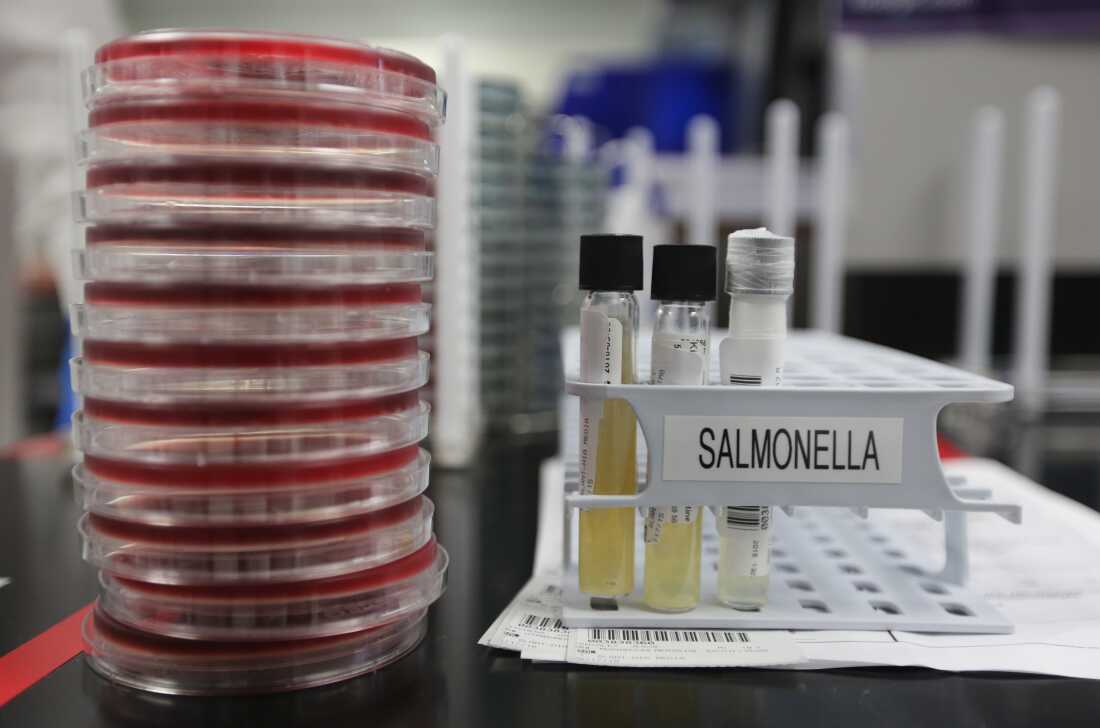
Agar plates with salmonella cultures ready for testing in the Medical Microbiology at the Houston Health and Human Services Department on June 18, 2015, in Houston. ( / Houston Chronicle ) (Photo by Mayra Beltran/Houston Chronicle via Getty Images) Mayra Beltran/Houston Chronicle via Getty Imag hide caption
toggle caption Mayra Beltran/Houston Chronicle via Getty ImagIts one of the most common forms of food poisoning in the world.
Salmonella — a stubborn bacteria known for its spread through contaminated food, water and even pets — is responsible for roughly 1.35 million infections in the U.S. each year. It leads the country in food poisoning-related hospitalizations and deaths, according to the Centers for Disease Control and Prevention.
Most recently, a salmonella outbreak tied to a California egg producer sickened at least 79 people, as of June 6. It also triggered a recall of 1.7 million dozen eggs that may have been contaminated.
Sponsor Message

Health Salmonella outbreak linked to California egg distributor sickens 79 people
Despite its fishy name, salmonella has no connection to the underwater creature salmon. Rather, the story behind the bacteria is one of disputed credit between two American researchers. It's also linked to one of the most famous cases in medical history about the balance between public health and individual freedoms.
Here's a look at the origins behind the bacteria's name.
Where did 'salmonella' come from?The bacteria is named after Daniel E. Salmon, an American veterinary pathologist from the late 19th century, according to the Food and Drug Administration.
While the bacteria bears his name, there is some debate over how much credit Salmon should receive over his laboratory assistant Theobald Smith, who many believe was the one to isolate the microorganism from sick pigs in 1885. At the time, the bacteria was referred to as "hog-cholera bacillus" because it was identified while researching the cause behind hog cholera.
Salmon and Smith clashed over credit several times, according to a biography on Salmon. Still, their collaboration led to major advances in public health, including research that would help pave the way for the production of the polio vaccine.
In 1900, French-Argentinian bacteriologist Joseph Leon Lignières who was studying the pathogen proposed that the species of bacteria be named "salmonella" in honor of Salmon.
Sponsor Message
" It's very common for species of all kinds and bacteria and basically anything in the scientific world to be named after its discoverers," said Jess Zafarris, an author of etymology books who writes about word origins.
Zafarris added that it was also common to add the Latin suffix "ella" when naming bacteria and algae. For example, "Chlorella" combines the Greek word "chloro," meaning green, with the suffix to describe green algae. Similarly, the bacteria "leigionella" was named after an outbreak that occurred at an American Legion convention.
Salmonella's appearance over the centuries and 'Typhoid Mary'While salmonella's name was coined in the 20th century, evidence suggests the bacteria itself has been infecting humans for centuries.









